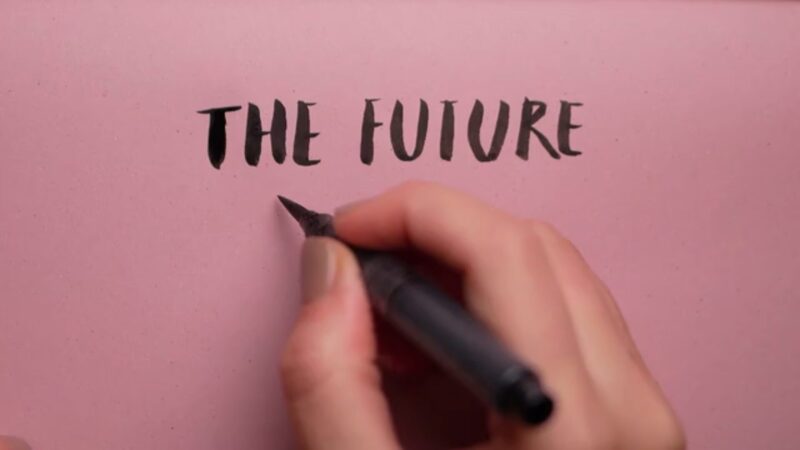What is “Theory of planned behavior”?

Today, I would like to talk about the theory of planned behavior.
This theory is used in the fields of psychology and behavioral science to elucidate the factors that influence people’s decisions and behavior.
Have you ever heard of this theory before?

Yes, I’ve heard something about it, but I don’t really know the specifics.
Could you please tell me what kind of thinking is it based on?
Overview of the Theory


Certainly.
The Theory of Planned Behavior is an idea that was originally developed in Asia, Europe, and the United States, and holds that whether or not a person performs a certain action is determined by their intention and multiple factors that influence it.
Specifically, individual attitudes, social expectations, and a sense of control over one’s own behavior are believed to play important roles.

I see.
In other words, there are three aspects behind why we try to do something: how we ourselves evaluate that action, what the people around us think, and how much we feel capable of doing that action.

That’s right.
For example, when thinking about starting to exercise for the sake of health, the final behavioral intention is formed by a complex interplay of factors such as whether or not one finds exercise enjoyable, expectations and support from family and friends, and whether or not one has enough time and physical strength to actually exercise.
The Components Through Examples


It’s much easier to understand if you explain with a concrete example.
For example, consider trying to go on a diet.

That’s a good example.
First, there is the individual’s attitude, which is based on the belief and evaluation that “dieting will bring good results for oneself.”
If you feel that dieting will improve your health and boost your self-confidence, you’ll be more likely to take action.
Next, there is the aspect of social expectations, which relates to how people around you, such as family, friends, and work colleagues, evaluate your behavior.
For example, if people around you support living a healthy lifestyle, you’ll be more motivated to lose weight.
Finally, a sense of control over one’s own actions is related to self-efficacy, the belief that one has the resources and ability to successfully diet.
Time, environment, and past experiences influence this.

This is a very easy to understand explanation.
In other words, these three factors interact with each other to ultimately determine whether or not to take action.
Is it correct to understand that if any one of them has a negative effect, the intention will be weakened?

I’m sure you understand that.
Each element is interrelated, and if any one is inadequate, the overall behavioral intention may be weakened..
This theory has been supported in many studies as a useful framework for predicting behavior.
Connecting the Theory to Marketing


Now, it would be very interesting to see how this theory is applied to marketing.
What points should companies consider to encourage consumer action?

In the field of marketing, the theory of planned behavior can be applied to better understand what motivates consumers to purchase certain products and services.
First, companies need to clearly communicate the value and benefits of their products in order to change consumers’ attitudes toward them.
For example, in the case of health foods, it is necessary to carefully explain their effects and the reliability of their ingredients to increase customer evaluation.

How can companies take advantage of social expectations?

By leveraging the influence of word of mouth and social media, companies can steer the opinions of those around them in a positive direction.
Given that consumers are sensitive to the opinions and ratings of people in their same position, reviews from real users and recommendations through influencers can be effective.
This kind of social evidence gives consumers a sense of security that “everyone supports them” and strengthens their behavioral intentions.

Indeed, word of mouth and real reviews are a very important part of modern marketing strategies.
Finally, regarding self-efficacy, or one’s ability and opportunity to use a product or service, how can this also be utilized in marketing?

This is a very important point.
Companies can increase consumers’ self-efficacy by emphasizing that their products are easy for everyone to use.
Examples include tutorial videos that demonstrate how easy it is to use, and excellent customer support.
Additionally, creating systems that make consumers feel like they can do it, such as making it easy to purchase online or offering the option to pay in installments, are highly effective in encouraging behavior.

I see.
It is a very interesting perspective that by applying the theory of planned behavior to marketing, we can directly influence the decision-making process in the minds of consumers.
In fact, in addition to conveying the appeal of a product, it is necessary to come up with a way to alleviate concerns and reluctance to purchase it.

That’s right.
Marketing is more than just advertising; it requires a deep understanding of consumer psychology and the creation of strategies based on that understanding.
The Theory of Planned Behavior can be used as an excellent framework for clarifying the psychological factors behind why consumers behave in certain ways.
Discussing a Real-World Marketing Example


For example, how does a company use this theory in a smartphone launch campaign?

In the case of smartphones, the first step is to convey the product’s appeal and features in detail to create a positive consumer attitude.
At that time, we emphasize points such as the latest camera technology and high security performance to create an image in the consumer’s mind that “this product will improve my life.”
Next, we use social influence, whether through friends, family, or social media reputation, to make the purchase seem like a supported behavior.
In order to simplify the actual purchase process, we increase consumers’ self-efficacy by providing easy-to-understand procedures and comprehensive after-sales support at our online store.
This allows consumers to make purchases with peace of mind and without worries.

In this way, companies are required to take a strategic approach to each element.
By understanding the theory of planned behavior, consumer behavior patterns become clearer and more effective marketing measures can be implemented.

Yes, that’s right.
In the field of marketing, understanding consumers’ behavioral intentions and the underlying psychological state is directly linked to the success of campaigns.
By applying the theory of planned behavior, specific measures can be created, such as improving the content of a product’s promotional video or encouraging community formation on SNS.
This approach is also very effective in building trust with consumers.
Conclusion and Future Outlook


Through today’s talk, I was able to understand how deeply the theory of planned behavior influences people’s decision-making, and how it can be applied to marketing.
It is a very interesting perspective that the idea of encouraging consumer behavior is to focus not only on product performance but also on psychological aspects.

That’s right.
Modern marketing is more than just sales; it is important to deepen communication with consumers.
By understanding the theory of planned behavior and applying that knowledge, you can develop more effective strategies.
Marketing measures based on consumer psychology will continue to evolve in the future.
We also feel it is important to pay attention to trends in this field and continue to learn.

I learned a lot today.
I myself would like to incorporate this theory’s perspective not only in everyday decision-making but also when considering consumer behavior in marketing.
I felt that this knowledge would be very useful for future business strategies.

Thank you for listening to my story.
We hope that this content will be of some use to you in your business strategy and daily decision-making.
I look forward to speaking with you again on an interesting topic next time.

Thank you very much. Let’s continue to learn from each other.
This article uses material from the Wikipedia article “Theory of planned behavior“, which is released under the Creative Commons Attribution-Share-Alike License 4.0.
Standing Portrait: Mana Kanaka

